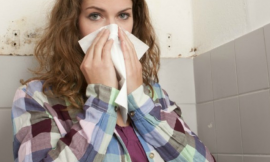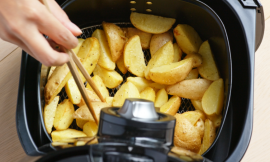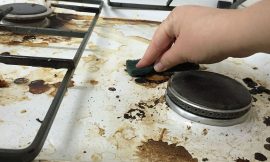
Did you know that up to 60% of American homes have mold issues lurking in hidden spaces like crawl spaces? Mold can not only damage your home's structure but also pose health risks to your family. In this engaging article, we’ll unveil the tell-tale signs of mold and provide you with the essential steps to safely remove it. Whether you're a seasoned homeowner or a new occupant, understanding how to spot and deal with mold is crucial for maintaining your home’s integrity. Let’s dive into the world of mold detection and removal!
Understanding Mold in Crawl Spaces
Mold is a type of fungus that can grow both indoors and outdoors, and there are several different types of mold. Generally, it thrives in damp, warm conditions, making crawl spaces an ideal environment. But why are these spaces particularly vulnerable? Crawl spaces often experience high humidity levels due to poor ventilation, water leaks, or ground moisture, all of which create a perfect breeding ground for mold.
Exposure to mold can pose significant health risks, including respiratory issues, allergic reactions, and even more severe complications for those with weakened immune systems. It’s essential to address mold problems in crawl spaces promptly to protect your health and maintain a safe living environment.
Signs of Mold Growth in Crawl Spaces
Visually, mold can appear as black, green, or white patches and may have a fuzzy or slimy texture. If you notice any of these changes, it’s a strong indication that mold is present. Besides the appearance, mold often emits a musty or damp odor, which can be another significant indicator of its existence.
Environmental factors like high humidity, water damage, or poor drainage can contribute to mold growth in crawl spaces. Therefore, being aware of these factors is crucial for early detection.
How to Inspect Crawl Spaces for Mold
When it comes to inspecting your crawl space for mold, you'll want to be well-prepared. Tools you may need include a flashlight, moisture meter, and protective gear like gloves and a mask.
Here’s a step-by-step guide for a thorough check:
- Ensure safety: Before you enter, check for any hazards, like unstable ground or sharp objects.
- Use a flashlight: Look for any visible signs of mold on surfaces such as wood, insulation, or walls.
- Check for moisture: Use your moisture meter to assess the level of humidity; a reading over 20% can indicate a problem.
- Smell the area: Pay attention to any musty odors that may suggest mold growth.
Regular inspections are critical for preventing mold growth and ensuring that you can address issues before they escalate.
Effective Mold Removal Techniques
When it comes to removing mold, you have a choice between DIY techniques or hiring professional services. DIY methods can be effective for minor infestations, but larger problems may require expert attention.
If you're taking the DIY route, follow this step-by-step process for mold removal:
- Gear up: Wear protective gear to prevent inhalation or skin contact.
- Seal the area: Close off the affected space to prevent spores from spreading.
- Remove affected materials: If possible, remove any moldy materials, such as drywall or insulation.
- Clean surfaces: Use a mixture of water and detergent, or a dedicated mold removal product, to scrub the affected areas.
- Dry the space: Ensure the area is thoroughly dried to prevent future growth.
Safety precautions are essential while removing mold. Ensure proper ventilation in the area and avoid disturbing mold spores as much as possible.
Preventing Future Mold Growth
To keep mold at bay in your crawl space, focus on moisture control. One of the best practices is to ensure proper drainage around your home. Installing gutters and downspouts that direct water away from your foundation can significantly help.
Ventilation is equally important. Consider installing vents in your crawl space to allow for air circulation, which can help reduce humidity levels. Additionally, regular maintenance and inspections can deter mold growth before it becomes a significant issue. Checking for leaks, monitoring humidity levels, and ensuring that the area remains dry will greatly reduce the chances of mold returning.
Conclusion
In conclusion, spotting and removing mold in crawl spaces is essential for ensuring a healthy home environment. By understanding the signs of mold, properly inspecting your space, and taking preventive measures, you can protect your home and loved ones. Don’t hesitate to take action! If you suspect mold, start your inspection today. Your future self will thank you!






